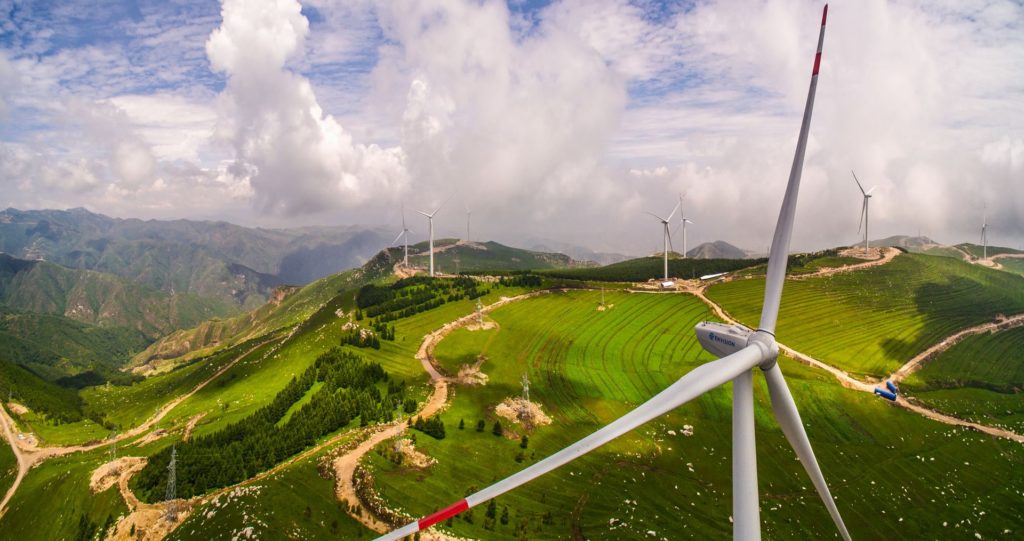Shanxi Province in northern China is the heartland of China’s coal industry. With an economy dependent on coal, it has produced a quarter of the nation’s coal output in the past seven decades.
Liu Zhong, a typical local coal miner, worked for the Shanxi Coking Coal Group, China’s largest coal producer, for 11 years. He was the third generation in his family working in coal mines. But things started to change when the coal mine that Liu worked in was shut down in 2016.
“Closing down coal mines will happen sooner or later, but luckily the government has helped us to find new jobs,” said one of Liu’s colleagues. The disused coal mine, together with three others, has been converted into a national mine park. The once blighted lands and bleak hills are now a popular tourist site for visitors to explore the region’s mining history but, more importantly, its green future.
From 2016 to 2020, over 100 coal mines were shut down in Shanxi, cutting capacity by around 800 million tons. Other coal-producing regions adopted similar policies. Support for coal, which once made sense for economic development, is being gradually phased out as part of China’s broader effort to shift toward green development.
The quest for green transformation is driven mainly by two factors.
First, China’s growth model that fueled its development in the past decades has to adapt to new circumstances. Naturally for a developing country, coal-fired power and heavy industries help lay the groundwork for its industrialization. Yet reliance on fossil fuel comes at a price. Environmental impacts on air, water and soil have triggered a growing call for a greener economy that delivers a better life for the people.
Second, China’s pursuit of high-quality development requires the country to shift from carbon-intensive growth to greener growth. Due to resource and environmental constraints, the traditional growth model is no longer an option. Investment in renewables can free China from its dependence on fossil fuel, open up new sources of growth and jobs, and make development more sustainable and inclusive. IMF predicts that by acting to curb carbon emissions “China would enjoy substantial co-benefits—around 0.7% of GDP immediately and 3.5% of GDP by 2050”.
These factors have prompted China to take a greener approach, and a systemic shift has been set in motion. Firm government commitment is key to such transformation, as evidenced by writing “building a Beautiful China” into the report of the 18th Party Congress in 2012, and “ecological conservation” into the Constitution in 2018.
From 2016 to 2020, under the country’s 13th Five-Year Plan, China’s environmental protection progressed greatly. By the end of last year, China completed all the pollution control targets set out in the plan, including a 18% reduction in carbon emissions and a 15% reduction in energy consumption per unit of GDP from 2015 levels, and a 25% reduction in harmful PM2.5 particles.
The government is also stepping up efforts to encourage R&D in renewable energy. China’s first national fund on green development, which was set up in July last year, has already raised over 88 billion yuan. China now leads the world in investment in clean energy,with some US$83.4 billion in 2019, 38% of the global total. The closest country to China was the United States at US$55.5 billion. Local governments are also incentivized to provide financial support to engage the private sector in green growth.
These efforts have paid off. At the end of 2020, China’s total national installed capacity of renewable energy reached 934 million kilowatts, up 17.5% year-on-year. China is now the world’s largest producer, exporter and installer of solar panels, wind turbines and electric vehicles. China is also on track to become the largest market for renewable energy, as reports show that 1 in every 4 gigawatts of global renewable energy will be generated by China through 2040.
Equally important as China’s domestic green transition is its role in addressing global climate change. As more countries are committed to cut emissions, China has also made its most ambitious pledge to tackle climate change. Last year, in his virtual remarks to the Climate Ambition Summit, China’s President Xi Jinping announced that China aims“to peak carbon dioxide emissions before 2030 and achieve carbon neutrality before 2060”, a target included in China’s latest Five-Year Plan spanning from 2021 to 2025.
In the coming five years, some 700 coal mines will be closed, 530 million tons of steel capacity will be produced with ultra-low emission and 850 million tons of cement and 460 million tons of coke capacity generated through clean production. These are to make sure that by 2025, China’s carbon intensity will drop by 18% and energy intensity 13.5% from 2020 levels, laying a solid foundation toward net zero emissions.
For the international community, China’s green endeavor will present a big market for global investors interested in clean energy, and China’s climate action will make a bigger difference in implementing the Paris Agreement. China’s commitment to carbon neutrality, according to EU experts, can be a possible game-changer for the climate.
By the time more advanced and industrialized economies like the United States and the European Union meet their goal for net zero, they would have undergone a transition of 50 to 60 years. China will need to achieve this in 30 years. Not an easy task. Yet with a strong government commitment and decisive actions, the country is determined to make the planet a greener and better place for future generations.
Former coal miner turned ride-share driver, Liu Zhong now lives a more fulfilling life. Working flexible hours, Liu is happy that he can be back in the driver’s seat of his own life, and that is largely attributable to his new job — less physical, higher income and delivers better life for him and his family.

